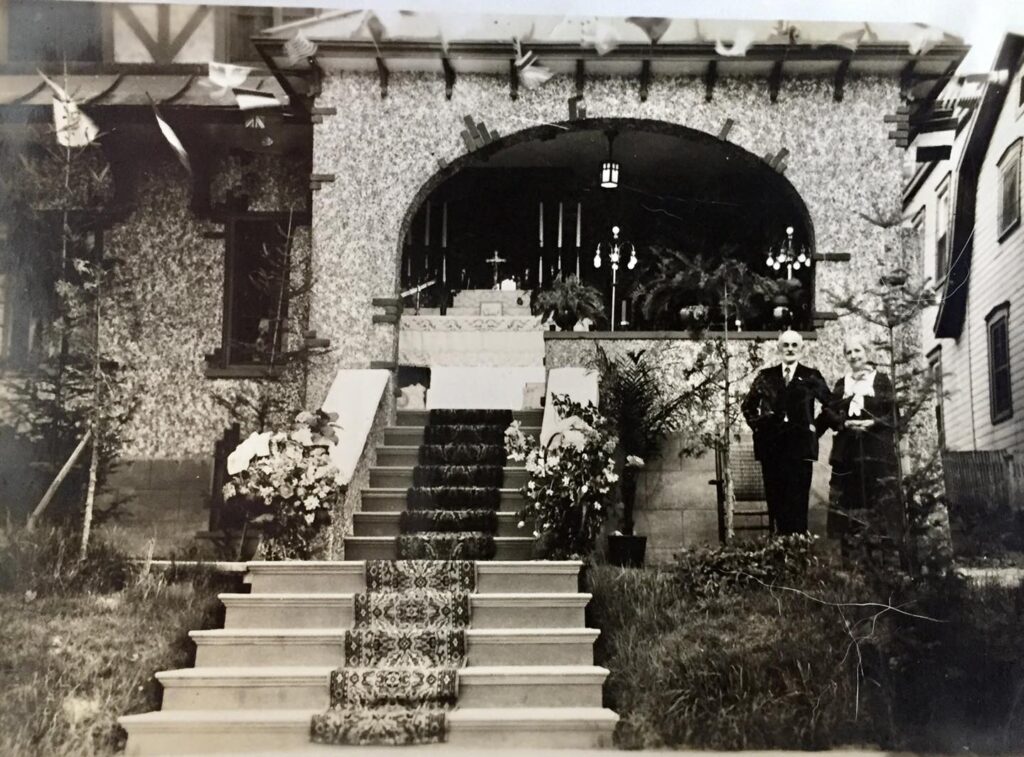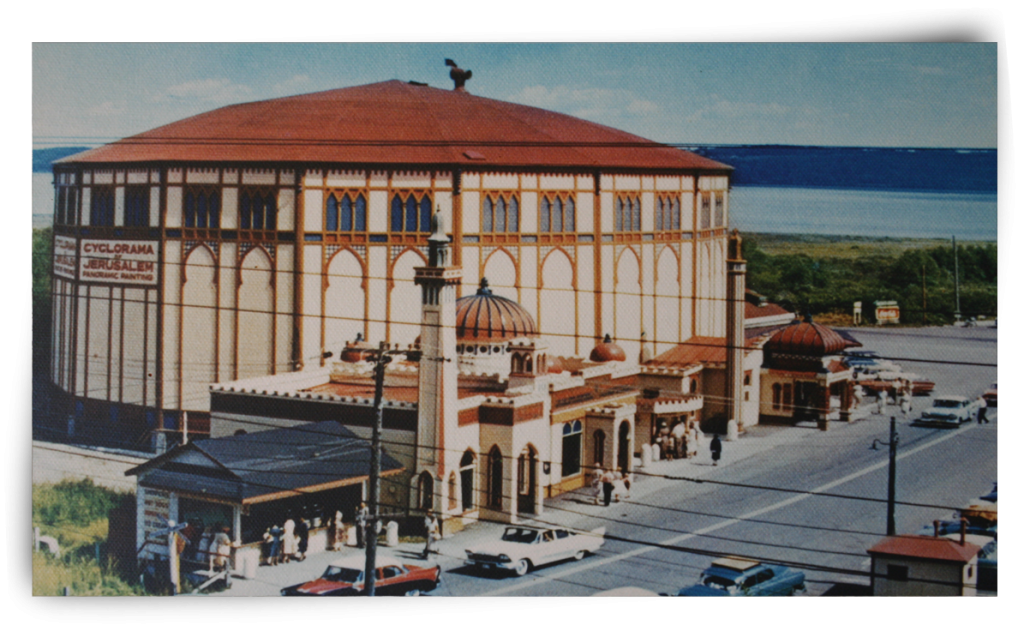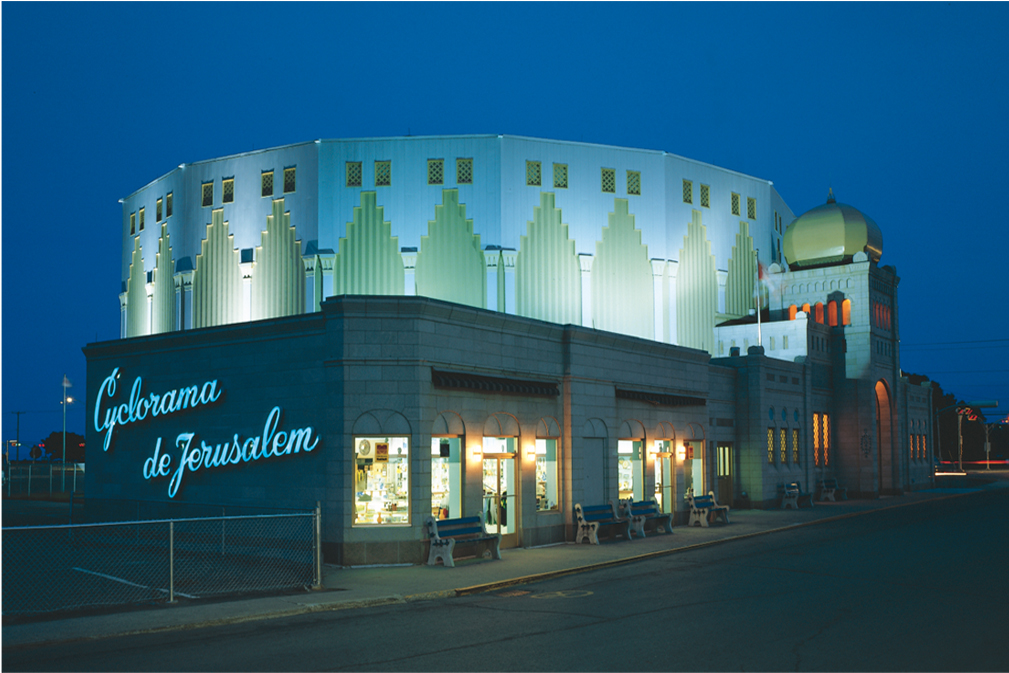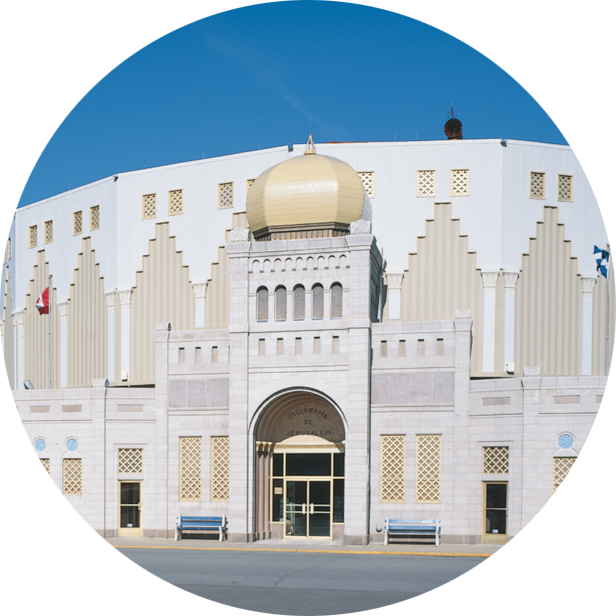
HISTORY
THE CYCLORAMA OF JERUSALEM
was conceived by a prominent German painter from Munich, Bruno Piglhein.
More than a century ago, Piglhein was commissioned by Joseph Halder, a wealthy Munich merchant, to create a large panoramic painting representing the Crucifixion, the city of Jerusalem and the surrounding contryside.
After studying everything available at that time, Piglhein traveled to Jerusalem accompagnied by distinguished collaborators : Josef Block, Johann Adalbert Heine and Josef Krieger. The four men spent an entire year in Jerusalem taking photos and studying the topography, architecture and the lifestyle of the inhabitants.
Back in Germany they created a large panoramic painting wich was subsequently exhibited in Munich and Berlin in Germany as well as in Vienna, Austria. Disaster struck in 1892. This large painting burned in a fire in Vienna. Piglhein was deeply distraught.
In 1887 Ernest Pierpont (1853-1903) a Chicago doctor and businessman who had been producing panoramas for several years, equipped himself with Piglhein’s plans and research. He aimed to produce a new panorama entitled “Jerusalem at the Time of the Crucifixion”. With Piglhein’s documentation, Pierpont assembled a team of masterful painters for this endeavor : Oliver Dennett Grover (1861-1927) and Charles Abel Corwin (1857-1938) from Chicago; Salvador Mège (1854-1915) and Ernest Gros (1859-1930) of Paris; and Edward James Austen (1850-1930) of London. Each of these men had contributed to the production of other panorama paintings.
This enormous rolled canvas was shipped from the American studio to Montreal, where visitors could view it from 1889 to 1895. The attraction was located in the heart of downtown, at the corner of Sainte-Catherine and Saint-Urbain streets, where Place des Arts stands today. The building was inaugurated in February 1889.
The land on which the building is constructed is leased from the Grey Nuns of Montreal, who own it, and is subject to a 9-year lease. But after 5 years, seeing that the American compagny was not respecting its commitments, they terminated the lease.
In the spring of 1895, Montreal lawyer Ubald Plourde (1864-1939) purchased the Cyclorama of Jerusalem. He and his wife transported the rolled-up artwork to Sainte-Anne-de-Beaupré by boat, right next to the Sanctuary. Ubald was a young lawyer of 31, and Ablina was almost 26. They settled in Sainte-Anne-de-Beaupré, on Avenue Royale, not far from their new project. His wife, Albina Laurendeau-Plourde (1869-1964), would later become the sole owner from 1939 onward.
Albina Laurendeau-Plourde and Ubald Plourde, owners of the Cyclorama, in front of their house on Avenue Royale, Sainte-Anne-de-Beaupré, around 1930.
Shortly before the move, on May 10, 1895, the building collapsed “due to the force of the wind,” a newspaper reported. Two works were already packed for their departure : Jerusalem at the Time of the Crucifixion and Custer’s Last Stand, which depicts the Battle of Little Bighorn. The young couple therefore and a new polygonal building constructed on stilts to house the panoramic painting in Sainte-Anne-de-Beaupré.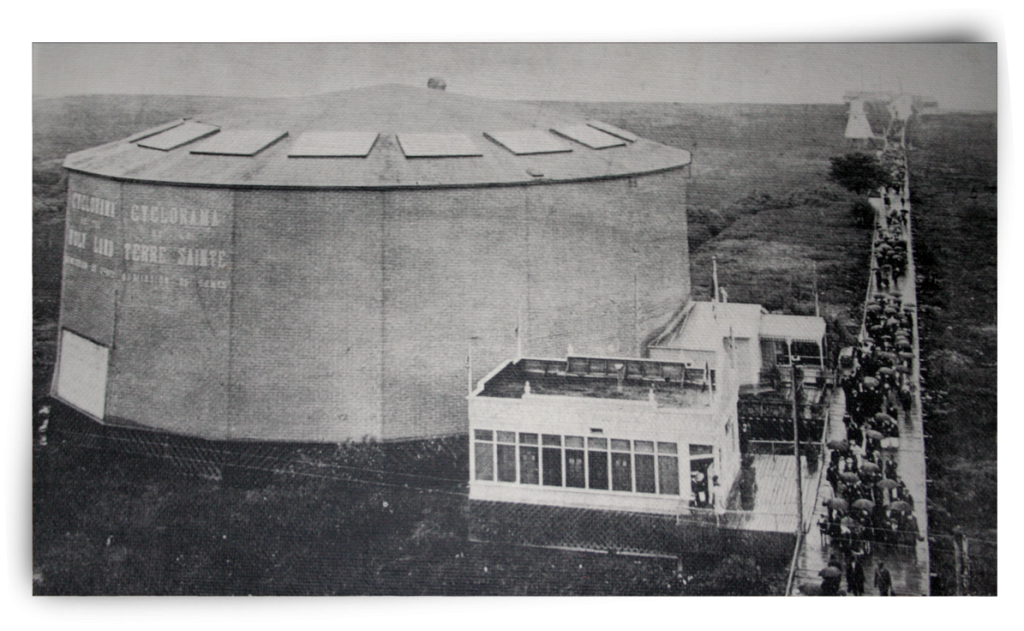
The Cyclorama of Jerusalem, Sainte-Anne-de-Beaupré, circa 1895
Between 1925 and 1927, Mrs. Laurendeau-Plourde had outbuildings constructed in a Byzantine style, based on the plans of architect Raoul Chênevert.
In 1949, Georges-Henri Blouin, a loyal employee of the Cyclorama for several years, reached an acquisition agreement with Mrs. Laurendeau-Plourde. The Blouin family officially took possession in 1957, and the Cyclorama de Jerusalem Inc. corporation was created. That same year, on December 9, 1957, a section of the roof collapsed under the weight of the snow, taking with it part of the observation gallery and the corridor. Reinforcement work on the building was undertaken under the direction of engineer Oscar Dorval, according to plans by Émile-Georges Rousseau. A new exterior shell was installed for the rotunda, and the entrance pavilion was modified. The souvenir shop, which had already been undergoing renovations since the summer, was also enlarged.
From March 1958 to September 1959, the Bulgarian-Polish artist Christo Stefanoff (1898-1966) was commissioned to reproduce the damaged part of the artwork. The artist was also asked to modify the faux terrain at the front of the stage. In 1982, an exterior cladding of enameled steel was added to the rotundo, according to plans by Louis Carrier.
The Cyclorama of Jerusalem, Sainte-Anne-de-Beaupré, circa 1950
In August 2017, a notice of classification was published by the Ministry of Culture and Communications of Quebec to have the Cyclorama recognized as a heritage property. On August 8, 2019, the artwork, the rotunda, and the sign were officially classified.
